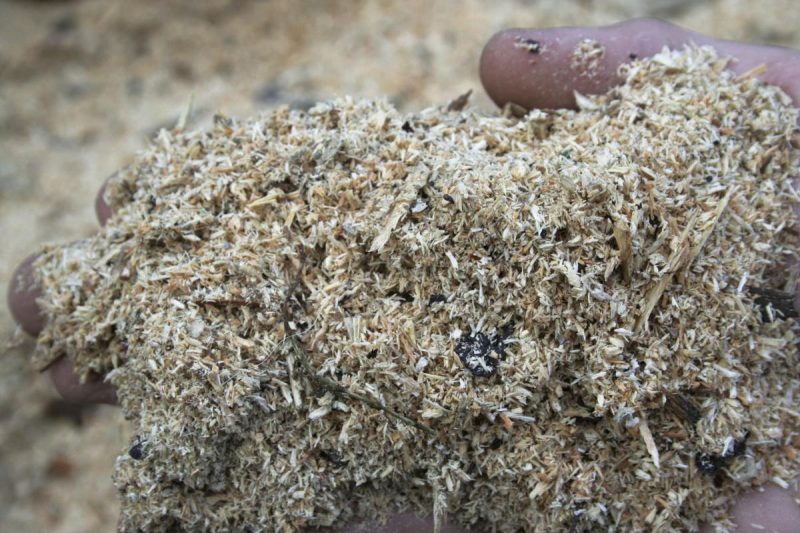Local Storage seems to be disabled in your browser.
For the best experience on our site, be sure to turn on Local Storage in your browser.
The Health Effects of Airborne Wood Dust and How to Manage Them | Dust Spares

If you work with wood, you should take great care to avoid wood dust exposure. Whether you’re operating a small timber yard or a large furniture making factory, excessive airborne particulate carries major risks if breathed in.
Wood dust is arguably the deadliest passive workplace health risk carpenters, joiners, builders, factory workers, and lumberjacks regularly face. Generated from cutting, sanding, and finishing raw, untreated wood, lumber, and combination materials (such as MDF), wood dust can quickly accumulate in the atmosphere in dangerous quantities. It can also damage worked items – by sticking to wet paintwork, for example.
Without PPE (Personal Protective Equipment) for workers and dedicated dust extraction and filtration systems in place, ingestion and ambient exposure can lead to serious short-term and long-term health problems. If you run a commercial workshop or factory, you could also be held liable for endangering your staff.
There are multiple, HSE-approved ways to combat airborne particulate build-up. Here’s the Dust Spares guide to which risks wood dust poses to workers, how best to prevent health issues arising from intense woodworking, and how to stay safe and legal while running a woodworking business.
The Potential Negative Health Effects of Wood Dust
There are three main ways ambient wood dust can negatively affect people – accidental ingestion, respiration, and passive dermal exposure.
Breathed in, microscopic wood dust particles damage the structure of the lungs, trachea, and nasal passage as well as the wider respiratory system.
Dust build-up in the lungs makes breathing harder, exacerbating or triggering asthma attacks and raising the risk of low-oxygenation issues (such as heart problems). Long-term exposure also increases the risk of deadly nasal and lung cancer developing through cell damage.
Sawdust is also an abrasive irritant – it hurts! Skin damage can result from excessive dust exposure, resulting in rashes and blisters. Worse, some people are allergic to wood dust – deepening the symptoms. Dust can also carry germs and trigger an immune reaction – resulting in redness, nausea, and eye diseases, such as conjunctivitis.
What are the (UK) Legal Regulations for Wood Dust Exposure?
To limit painful side-effects, the British government, as of 2020, has set out legal obligations for anyone working with dust-generating wood to stick to. These aim to reduce the risks of cancer, asthma, and lung problems developing from long-term workplace exposure.
COSHH (Control of Substances Hazardous to Health Regulations) demand that you ensure a level of airborne particulate less than the Workplace Exposure Limit (WEL) for wood dust. The WEL is a measurement of how much waste particulate can be present in a cubic metre of air over a certain period (c.8 hours or one working day).
If you’re unsure whether your workplace meets the safety criteria, you can book a personal or workplace exposure test.
The WEL for hardwood dust is 3mg.m³ over 8 hours.
The WEL for softwood dust is 5mg.m³ over 8 hours.
COSHH also recommends that you implement thorough cleaning schedules – accumulated fine dust carries severe risks to health. It’s also a separate legal requirement to fit some machinery with dedicated extractor systems and hoods, such as circular saws.
You can find more information about woodworking safety and current COSHH regulations at the Health and Safety Executive website.
How Can I Make my Workshop Safer?
Dust extractor systems are the best way to keep your air free of build-up. Capture hoods and duct connections extract and filter air, recycling it back out into the workplace or externally, dependant on the filtration grade. Dust filter bags and cartridges trap the waste in a micromesh, which can then be cleaned or replaced. You can even localise intakes to every workbench for an excellent standard of coverage.
However, bear in mind that machinery and filters need regular checks and proactive maintenance. By law, every particulate extractor needs an LEV inspection every 14 months. Filters, particularly collection bags, also need to be periodically changed as they wear out.
You should supply your woodworking employees with goggles, protective overalls and coveralls, and filtered respirators. Even the best extraction systems won’t always catch everything and there’s always a risk of exposure while the dust is being pulled in. Additional PPE requirements would need to be assessed and implemented where necessary.
Protective Perspex screens and barriers can also be another solution – make sure they’re fully transparent and safely positioned before use.
If you have any health concerns that you think could be linked to woodworking, stop, schedule a maintenance check, and contact a healthcare professional as soon as possible. Fast responses to dust exposure allow for better treatments.
Safe Woodworking with Dust Spares
Dust Spares stocks and supplies everything you need to run a safe, reliable, and clean woodworking workshop. Contact us today for a personal quote.
























